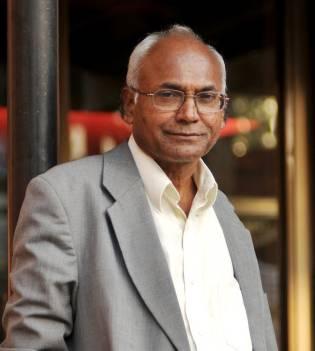Chandra Bhan Prasad
(Originally published in The Pioneer on August 28, 2001)
Was LK Advani’s Ram Rath a ploy to fight the Mandal Commission or only a tool with which to mobilise Hindus around the Ram Mandir issue? What must have been an electoral calculation – a subtle opposition to Mandal will earn the party upper caste votes – actually began to work when the Congress begun hobnobbing with “Mandal” parties! Read More But did a Hindutva design bring the BJP to power? With the Babri demolition, Hindu mobilisation had reached its zenith. Yet, the BJP was not able to capture power.
That must have shaken the BJP’s belief in Hindutva. The BJP had by then realised that a rabid anti-minority policy wouldn’t bring the Hindus into its fold – as Varna/Caste identities still prevailed over Hindutva.
This atmya-gyan forced the BJP to dilute its Hindutva card and instead, play the caste card. In this new awakening, the BJP seems to have charted out a new plank – one which says that anti-Dalit sensibilities can be used to garner the support of the upper castes (15%) and OBCs (46%) who, together, make up about 61 per cent of India’s population. The BJP seems to have, temporarily, succeeded as it holds power at the Centre. But what the party has not foreseen, is that Shudra platforms such as the TDP/DMK/Samata/JD(U) etc are only building up their strength after the collapse of the Third Front, and that they are likely to challenge the BJP in the near future – as they have historically always challenged the upper Castes.
How did the BJP first start out on its anti-Dalit run? Any person of even average intelligence knows the Dalits do not forgive anyone who questions Ambedkar. Arun Shourie condemned Ambedkar in his False Propositions – the Dalits hate him the most. But the BJP made him a minister. The Ministry of Social Justice & Empowerment deals with Dalit affairs and invariably, a Dalit heads it but the BJP got hold of an animal rights activist. Any average reader of Dalit political consciousness will know that what the Bible is to Christians or the Quran to Muslims, the Indian Constitution is to the Dalits. But the BJP-led government instituted a panel to “review” it. What message did that send out to the Dalit masses?
And now, the UP fiasco! The BJP had virtually pulled off a political coup by deciding to split OBC reservations in favour of the most backward classes (MBCs), who account for 26 per cent of UP’s population or about 57 per cent of UP’s OBC population but are grossly under represented in government jobs. Due to the collapse of the Zazmani economy, OBC and MBC artisans have, in terms of marginalisation, been pushed down at par with the Dalits. The HN Bahuguna government had , in October 1975, set up the Most Backward Classes Commission, which put forward its report in May 1977. The Commission had recommended the splitting of the OBC quota into three: 17% for MBCs, 10% for upper OBCs and 2.5% for Muslim OBCs.
Ever since 1977, the MBCs have been demanding the separation of their quota but the Social Justicist/Secular lobby has not allowed the report to be tabled in the UP Assembly. That is why Mulayam Singh never won the MBCs’ support, which Laloo did because he never opposed a separate MBC quota in Bihar. MBCs and the upper castes, put together, constitute about 46.5% of UP’s electorate, a formidable winning formula. The Ambedkarite movement, too, has been demanding a separation of the MBC quota. LR Naik, the only Dalit member of the Mandal Commission, had, in fact, refused to sign the report when his plea to separate the MBC quota was turned down.
But Rajnath Singh, otherwise a man of integrity, is a genuine Thakur when it comes to intelligence. He is not blessed with an English education and to him, India does not exist beyond the Gangetic plains. He went a step further in coining the term “maha Dalit” and looking at splitting the Dalit quota as well, without realising that most Dalit sub-groups exist at the same level of deprivation. This new practitioner of caste politics is eyeing the Valmiki (1%), Dhobi (1.6%) and Khatic (less than 1%) votes. Strangely, these are the three sub-groups, mostly urbanised, amongst the Dalits, who were first paid for their labour and, on an average, are relatively more prosperous than other Dalit groups. Their perceived under representation in government jobs is due to the lack of social movement within the community. Even more so, when the Dalit quota has still not been filled up, where is the need to split it and when there has been no such demand from these communities, why should one split the quota?
Certainly, the BJP has shown its suicidal tendencies once again by playing with Dalit sensibilities. At a time when various Dalit sub-groups are merging into a broader “Dalit” category, Singh’s move will be seen as a “divisive” tactic of the upper castes.What strategy then, will the Dalits adopt? Defeat the BJP campaign and vote “strategically”. So far, only the minorities have been doing so. But the Dalits are likely to make up about 36% of UP’s electorate and, if aided by the upper OBCs, the figure could go up to 56%. Isn’t the BJP committing political suicide in UP?
~
[Courtesy: ambedkar.org]








